Understanding Nutrition Labels
Understanding Nutrition Labels
Take a walk down the grocery aisle, and you’ll notice food packaging has become a battleground of flashy marketing claims. From “gluten-free” on items that never contained gluten to “keto-approved” labels with no standardized definition, food labels today can feel more like billboards than helpful information. Some products even flaunt phrases like “no added hormones” on poultry and eggs—a fact already mandated by U.S. law.
The latest trend is “GLP-1-approved” foods, which suggest they align with popular weight-loss medications. In reality, this often just means the food is high in protein and fiber, with no changes to the product itself—just new packaging.
It’s time to cut through the noise. Here’s how to ignore unnecessary marketing and focus on what really matters: the ingredients list and the Nutrition Facts Panel.
Step 1: Start with the Ingredients List
The ingredients list is your first line of defense against misleading claims.
Allergens: The ingredients list and allergen declaration are crucial if you have food allergies or intolerances. The top 9 allergens (milk, eggs, fish, shellfish, tree nuts, peanuts, wheat, soy, and sesame) must be clearly labeled by law. Check for any mentions of cross-contamination or indirect exposure to allergens.
Aliases: Knowing alternative names for intolerances like gluten sensitivity is essential. For instance, gluten may appear as “natural flavors” or be hidden within other additives. When in doubt, consult a dietitian or trusted resource.
Step 2: Decode the Nutrition Facts Panel
The Nutrition Facts Panel provides a wealth of information—if you know what to look for.
1. Serving Size
Start here. Serving sizes are often smaller than what you’d expect. If a single package contains multiple servings, you may need to adjust the numbers to reflect what you actually eat.
2. Saturated Fat
While total fat isn’t necessarily a bad thing, saturated fat should be consumed in moderation. Aim for:
Less than 3–5 grams per serving.
Or, less than one-third of the total fat content.
3. Fiber
Fiber is a superstar nutrient found in plant-based foods. Look for:
At least 3 grams per serving.
More is even better, especially since most people fall short of daily fiber recommendations.
If a food has less fiber, that’s okay too—it just means you’ll need to make up for it elsewhere.
4. Added Sugars
The label differentiates between total sugars (which include naturally occurring sugars) and added sugars. Examples of naturally occurring sugars include lactose in dairy and fructose in fruit. Ideally:
Choose foods with 0 grams of added sugars.
If added sugars are present, aim for less than 3–5 grams per serving for most foods.
This doesn’t mean avoiding all foods with added sugars, but it helps to minimize them where possible.
5. Protein
Protein is vital for maintaining muscle, energy levels, and overall health. Look for:
At least 5 grams per serving.
More is better, especially if you’re active or focusing on fitness goals.
Beyond the Basics
Depending on your health goals, you may also need to pay attention to:
Sodium: High sodium intake is linked to hypertension and other health issues. Aim for lower-sodium options if this is a concern.
Micronutrients: Vitamins and minerals are listed, but focus on the ones most relevant to your needs, like calcium, iron, or vitamin D.
Turning Knowledge into Action
Understanding nutrition labels empowers you to make informed choices. Here’s an example:
Resolution: “I want to eat healthier snacks.”
Action: Instead of relying on marketing claims like “healthy” or “keto-friendly,” check the label for:
Serving size (is this a snack portion or a meal-sized one?).
Fiber (does it have at least 3 grams?).
Added sugars (is it low or zero?).
Protein (does it have at least 5 grams?).
This approach ensures you choose foods based on facts, not flashy packaging.
Final Thoughts
Food companies are skilled at marketing, but you don’t have to fall for unnecessary claims. Focusing on the ingredients list and Nutrition Facts Panel allows you to bypass the noise and make choices aligned with your health goals.
Don't hesitate to reach out if you’d like personalized guidance to make sense of labels or tailor your nutrition to your needs. We can cut through the confusion and make eating well simple and sustainable.
Call to Action
Looking for support in making healthier food choices? Let’s work together to create a plan that works for you. Reach out today for personalized nutrition!

